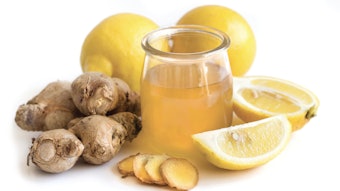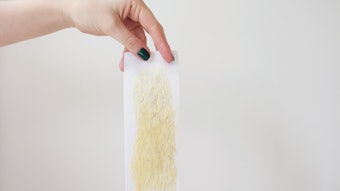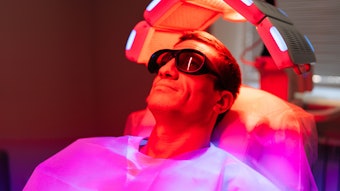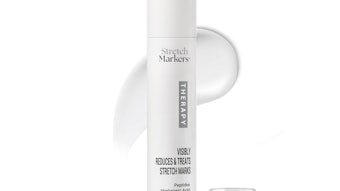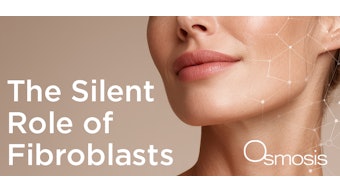
In the past, most consumers bought products that boosted great-looking skin and hair for aesthetic reasons, but this aim is now shifting to skin health. While no one is denying that a glowing visage and a luxurious mane of hair are important, there is a growing body of scientific evidence highlighting the role that skin can play in our overall well-being.
Log in to view the full article
In the past, most consumers bought products that boosted great-looking skin and hair for aesthetic reasons, but this aim is now shifting to skin health. While no one is denying that a glowing visage and a luxurious mane of hair are important, there is a growing body of scientific evidence highlighting the role that skin can play in our overall well-being.
As the conversation around skin health gains momentum, we are gaining novel insights into the impact of damaged or compromised skin on our health. While this might sound far-fetched, there is mounting evidence that skin barrier health is a key element in our overall health strategy.
Many people certainly think so. For example, a recent article in BBC Future, ‘The curious ways your skin shapes your health’ highlighted a growing body of evidence supporting skin barrier damage for its knock-on effect on the rest of the body. This is echoed by a piece in New Scientist that investigated the synergies between skin and inflammation. Another article in Time magazine, ‘Are Broken Skin Barriers a Real Thing?' unpacked the rise of TikTok ‘skinfluencers’ and the growing body of studies on how skin barrier and skin health can impact full-body wellness.
By viewing skin and scalp barrier health as a precursor to comprehensive health, brands, ingredient suppliers and formulators have a unique opportunity to develop products that nourish the skin, protecting the benefits found in its ecosystems, microbial and metabolome communities.
The Importance of Skin Barrier Health
As the largest organ in the human body, the skin barrier is often referred to as the unsung hero of a healthy body, protecting the physical, chemical, immune and microbial elements in the skin as an interdependent and connected system, but what can contribute to this system becoming unbalanced?
Externally, harsh cleansers, over washing, pollution, UV radiation and heat styling can strip the skin of essential lipids and natural moisturizers, while stress, hormonal changes, genetics and poor nutrition can impact and weaken the skin’s natural defences from the inside out.
Research conducted by the University of California, San Francisco suggests that wrinkly, diseased or damaged skin can become part of a system of inflammation, releasing a chemical cocktail that could lead to further damage. We now know that when certain chemicals cross the skin or scalp barrier, they can lead to the degradation of collagen and elastin. This can result in skin thinning, a reduction in elasticity, water loss and added susceptibility to external stressors.
The Science of the Skin & Scalp Barrier
Known scientifically as the stratum corneum, the skin and scalp barrier is the outermost layer of the epidermis. Functioning as a critical shield, it protects the body from environmental aggressors, pathogens and allergens while locking in essential moisture. It also maintains a slightly acidic pH, which supports a healthy microbial ecosystem and deters the growth of harmful bacteria and fungi.
When illustrated, this barrier can look like building bricks on a wall. Lipids, which make up these ‘bricks’, comprise a blend of fatty acids, ceramides and other nutrients, which act as the skin’s natural moisturizing balancer. Like most things in life, when the skin barrier is in sync and functioning well, it is hardly noticeable, but when this finely balanced structure becomes compromised, a cascade of problems can follow.
When the Balance Breaks Down
A disrupted skin or scalp barrier can trigger inflammation, irritation and a host of dermatological conditions. On the scalp, this dysfunction can manifest as dandruff, seborrheic dermatitis, tinea capitis and parasitic infestations such as pediculosis capitis. Scalp barrier dysfunction can disrupt the balance of sebum production, with excessive sebum production creating an ideal environment for the overgrowth of Malassezia, a yeast-like fungus associated with dandruff.
For the skin, a compromised barrier often shows up as tightness, dryness, itching and atopic dermatitis, all closely linked to barrier dysfunction. The result? Heightened sensitivity, and increased trans epidermal water loss.
In extreme cases, the chemicals released by diseased and dysfunctional skin can enter the bloodstream, where they move around unhindered, damaging other tissues. Amid the ensuing systemic inflammation, chemicals from the skin can reach and harm organs that seem entirely unrelated, including the brain and heart.
This makes skin, and critically skin barrier health, a compelling opportunity for brands to create products that not only soothe symptoms but actively support the long-term resilience of the skin and scalp.
Barrier-Friendly Formulations
The simplification of skin and hair care routines is often touted by modern trichology and dermatology practitioners as one way to lessen external skin stressors. While “less is more” is a growing mantra, simplicity in formulations must go hand-in-hand with efficacy and ingredient integrity. This is resulting in a move toward naturally derived, microbiome-friendly formulations—particularly in product categories targeting sensitive skin and scalp types.
Stephenson’s Durosoft polyglyceryl ester range exemplifies this approach. As a COSMOS-approved and palm-free product, Durosoft offers multifunctional capabilities. Known for its excellent emulsification, solubilisation, and surfactant functionality, Durosoft is ideal in formulations that nurture rather than strip the delicate skin barrier. With a wide range of HLB characteristics, Durosoft is ideal for use as a water-in-oil or oil-in-water emulsifier to create stable emulsions, as a solubiliser that enables the effortless integration of fragrances and as an emollient or foam booster. Its non-ionic nature makes it compatible with a wide variety of oils, actives, surfactants and co-emulsifiers for sensitive skin formulations that nourish and protect.
Solid Solutions for Scalp & Skin
As the beauty industry pivots toward sustainability, solid-format products such as shampoo and body bars are quickly becoming synonymous with conscious consumerism. However, they're also proving to be particularly well-suited to barrier-supporting skin care and scalp health.
Solid syndet bars, like those formulated with Stephenson’s Syndopal base, offer a pH-balanced, mild cleansing option that respects both the scalp's microbiome and the skin’s protective layer. Unlike traditional soaps, syndets avoid harsh surfactants and offer minimal irritation—making them ideal for sensitive areas such as the face, scalp and intimate zones.
Syndets also offer great versatility.
With its customisable ingredient profiles, these products can be tailored to create multifunctional personal care solutions that address hydration, cleansing, exfoliation and microbial balance—all in a single bar. This is not only attractive from a consumer and simplicity standpoint but also aligns with growing market trends for value-driven, minimal-waste, multi-use products.
The Future of Personal Care is Barrier-Focused
Market analysts like Euromonitor International have highlighted a clear consumer trend: the shift toward softer-on-skin formulations that exclude harsh chemicals and allergens that can keep the delicate skin barrier intact. When functioning optimally, the skin and scalp barrier provides much more than protection: it plays a central role in hydration, microbial balance and even emotional well-being.
Moving forward we can expect more consumers to look for product labels that read "fragrance-free," "soap-free" or "alcohol-free" especially when purchasing products for sensitive or compromised skin conditions.
This shift is driving innovation in formulation technology, whether through ultra-mild surfactants, barrier-boosting actives like niacinamide and panthenol or emollients that mimic the lipid matrix of healthy skin.




